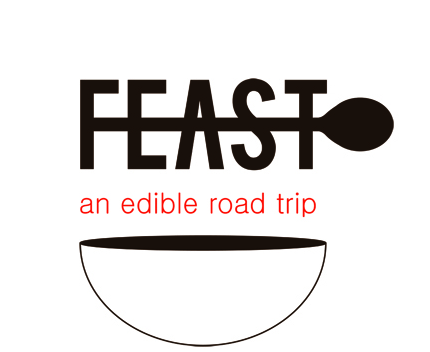BC Shellfish Festival (Part 1/2): Brunch, Geoducks & Oysters
A few weeks ago, I boarded a tiny but powerful Harbour Air seaplane, and watched as the stunning view of Coastal BC passed below me.
Fifty minutes later, I landed in the Comox Harbour, ready to experience some of the events that make up the 10-day long BC Shellfish Festival.
This annual event takes place in the beautiful Comox Valley on Vancouver Island, a region responsible for producing about half of the shellfish in BC.
The festival initially began as a way to raise awareness about the shellfish industry in BC, with a single dinner event put on by the seafood producers themselves. Now it’s a 10 day festival comprised of over 30 events, ranging from factory tours to gala dinners to oyster-shucking competitions, and much more!
The BC Shellfish festival is where Chef Ned Bell began his 8,700 km cross-Canada bike tour raising awareness about sustainable seafood last year.
My itinerary had me sipping Comox Valley wine, shucking oysters (my first time!), and making friends with geoducks.
After a huge portion of Huevos Rancheros at Courtenay’s beloved Atlas Café,
I visited the Manatee Holdings Ltd, a pioneering sustainable aquaculture facility for the development of scallops, oysters, sea cucumbers, and geoducks.
The factory grounds are lovely, with the ocean just a short walk away, mountains in the distance, and tree-lined scallop beds.
Manatee Holdings’ most prolific work is in geoduck aquaculture. Geoducks are the largest burrowing clams in the world, and they’re native to the Pacific northwest; the stable, cold temperatures of our waters make for ideal growing conditions.
They’re popular in Chinese, Japanese, and Korean cooking, and while most of BC’s geoducks are sent overseas, there is a small market for them locally, too. I’ve had geoduck in Vancouver at Blue Water Café during their “unsung heroes” event, a month dedicated to featuring lesser-known or lesser-appreciated sea creatures. The flavour is mild and their texture is chewy. It’s no secret that these shellfish win the ‘Most Phallic Ocean Creature’ award, but I was still pretty shocked to see water shoot out of it when touched.
I’m simply reporting what I see.
This factory is also where two thirds of BC’s oysters are started, so we checked out the oyster aquaculture, too. I was surprised to see tinier oysters than I thought possible.
These may look like grains of sand, but they’re actually oyster seeds! Most oysters sold to consumers are between three and five years old, so they obviously grow quite a bit during that time.
Speaking of oysters, I next joined a tour of the Fanny Bay Oysters facility.
We sampled some, and then, though initially hesitant to let me try shucking (sans waiver), Ray, the Sales Manager, guided me through how to twist and break open the hinge and cut the muscle off of both shells—all with one swoop of the knife.
Some people are capable of shucking at an astonishing speed. The world record is held by Patrick McMurarry, aka “Shucker Paddy,” who once shucked 38 oysters in a single minute (McMurray was also the host of the oyster shucking competition on the final day of the festival). It took me at least 3 minutes to shuck a single oyster in front of several sets of eyes, and I also managed to mix in a hefty amount of shell-debris, however I did NOT accidentally stab myself (you’re welcome, Fanny Bay) and I now have serious respect for the master shuckers.
Up next: a visit to two wineries and a festival dinner full of local seafood!
-DV
**Europe posts will continue after that—a rainy yet rewarding day in Passau, Germany coming up…





